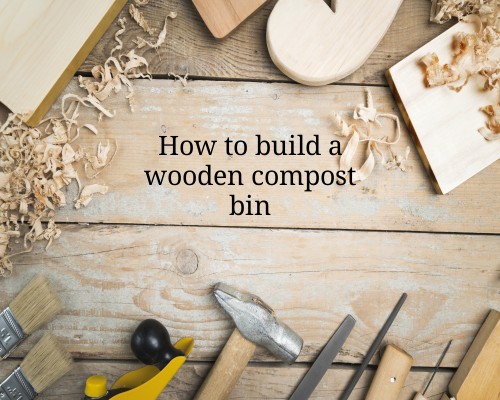Building a wooden compost bin is a simple yet effective project that allows you to recycle organic waste into nutrient-rich compost for your garden. Here’s a step-by-step guide on how to build your own wooden compost bin.
Materials Needed:
- 4 wooden pallets (or pressure-treated lumber)
- Nails or screws (preferably galvanized to resist rust)
- Hinges (for easy access)
- Wire mesh (optional, to line the inside of the bin)
- Saw (if you’re cutting your wood to size)
- Hammer or drill (for attaching screws or nails)
- Measuring tape
Step 1: Choose the Location
Pick a well-drained spot in your garden for the compost bin. Ideally, the area should have good airflow and receive partial sunlight. Avoid placing the bin in areas that are too shaded or too wet, as this could slow down the composting process.
Step 2: Prepare the Wooden Pallets
Wooden pallets are often used for compost bins due to their durability and ease of use. If you’re using pallets, they should be sturdy and free from chemicals or harmful treatments. Inspect them for any damage, and make sure they are clean.
You’ll need four pallets, one for each side of the compost bin. If you don’t have pallets, you can build the sides from pressure-treated lumber.
Step 3: Assemble the Base and Sides
To start, place three pallets upright to form the three sides of the compost bin. Position them with the slats running vertically to allow air circulation through the compost. Secure each pallet with nails or screws.
For the fourth side, you can either attach a pallet directly or use hinges for a door that will make it easier to turn and access the compost. Secure the pallet with screws to the other sides, leaving room for the door if desired.
Step 4: Add a Door (Optional)
If you want easier access to the compost for turning or removing it, add a door. Use hinges to attach one of the pallets to the front of the compost bin. This will allow you to swing it open and close. You can reinforce the door by adding a latch or hook to ensure it stays closed when not in use.
Step 5: Optional Lining
While not necessary, you may want to line the inside of the bin with wire mesh to prevent small animals from getting inside. This will also help keep the compost in place. Simply staple or nail the wire mesh to the inside of the compost bin.
Step 6: Allow for Ventilation
To help speed up the decomposition process, ensure your bin has proper ventilation. Wooden slats naturally allow airflow, but if your compost bin has solid sides, drill small holes or add gaps to increase ventilation. Good airflow is essential for aerobic decomposition, which is faster and produces better compost.
Step 7: Fill the Bin
Now that your compost bin is ready, start adding compostable materials. A balanced mix of “green” materials (like fruit and vegetable scraps, grass clippings, and coffee grounds) and “brown” materials (like dry leaves, straw, and cardboard) will help maintain the right moisture level and promote decomposition.
Make sure to regularly turn the compost to speed up the breakdown process. You can do this by simply opening the front door of the bin and using a pitchfork or shovel to mix the contents. This will introduce air into the pile and help it decompose faster.
Step 8: Maintenance
Over time, the compost will break down, and you’ll have rich, dark compost for your garden. Keep adding new compost materials and turn the pile every few weeks to ensure proper aeration. If the compost seems too dry, add water, and if it’s too wet, add more dry materials.
Final Thoughts:
A wooden compost bin is an easy and cost-effective way to manage organic waste and create nutrient-rich compost for your garden. By following these steps, you can build a durable and functional compost bin that will help you recycle waste while supporting healthy soil in your garden.
For a more advanced and detailed woodworking project, consider exploring Ted’s Woodworking Course, which offers over 16,000 plans, including compost bin designs. Check it out here.
